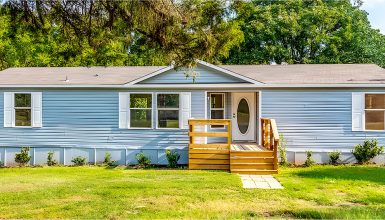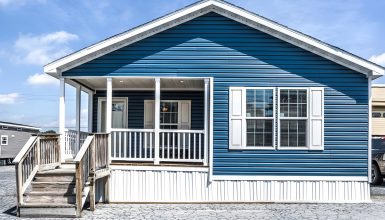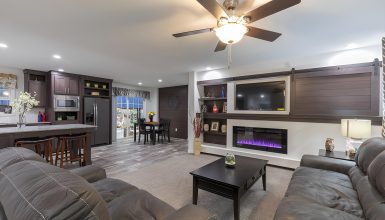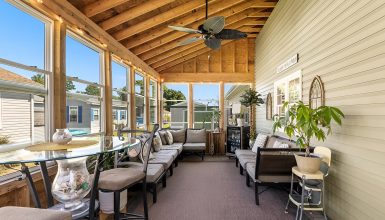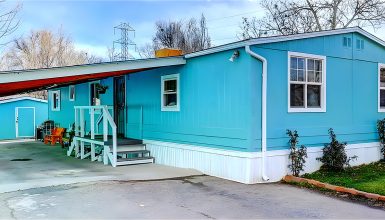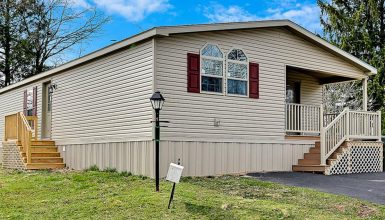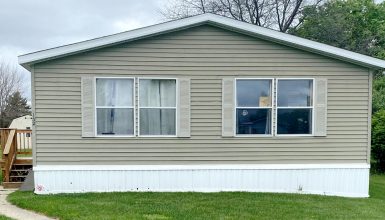How long does delivering and setting up a double-wide mobile home take? You’re looking at a few weeks to a few months for the complete delivery and setup. The timeline varies depending on manufacturer lead times, permits, and site preparation. But don’t fret! We’re here to break it down, step by step, so that you can plan your move without any hitches. This guide will walk you through each process stage—from that exciting moment you place your order to the day you kick back in your brand-new living room. Get ready to mark those calendars; your dream home is closer than you think!
Stage | Typical Duration | Key Tasks | Notes |
N/A | Research, budget planning, land purchase | Time varies based on your speed of decision-making | |
2 to 3 months | Customize features, finalize payment | Timeframe depends on manufacturer and customizations | |
2 to 4 weeks | Coordinate delivery, prepare for transport | Timing affected by road conditions, permit availability | |
1 to 4 weeks | Secure necessary permits, schedule inspections | Delays likely if government offices are backed up | |
3 to 4 weeks | Clear land, level site, set up utilities | Could be quicker if the land is already prepped | |
1 to 2 weeks | Assemble home, connect utilities, interior setup | Delays possible due to weather, contractor availability | |
Varies | Weather, contractor delays, supply chain issues | Always add a buffer for unforeseen delays | |
Varies | Communicate, adapt plans, check contracts | Having a contingency plan is crucial |
Keep in mind, these are approximate timelines and can vary widely based on a host of factors.
1. Pre-Buy Phase
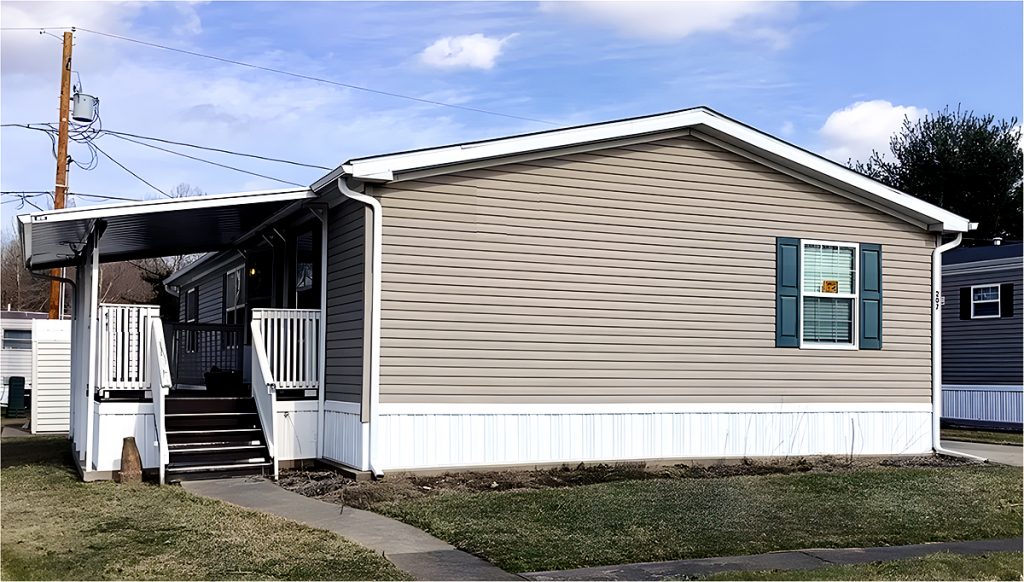
So you’re revved up and ready to plunge into double-wide living. But hold your horses! There are some essential things to consider before considering placing that order. Let’s dig in.
First up, financing. You don’t want to find your dream home only to discover it’s just out of reach, financially speaking. The approval process can take a few days to a couple of weeks, depending on your credit score and other financial details. So get on it and get pre-approved!
Next, let’s talk land. Do you own a plot? Are you going to lease? Either way, you need to know how long the preparations will take. We’re talking about clearing the land, leveling it, and maybe even laying down a foundation. This could take several weeks to a month, especially if permits are involved.
Speaking of which, you can’t forget about permits. Some local governments require permits for things like land use and utility connections. The time to secure these permits can vary wildly, from days to weeks, depending on local regulations.
So before signing any papers or shaking hands, ensure you’ve covered these bases. This pre-buy phase can take a month or even two, so plan accordingly.
2. Ordering Your Double Wide
Great, you’ve got your financing sorted, and your land is prepped and ready to go. What’s next? It’s time to order that dream double wide of yours. This is where the real fun begins!
First things first: Who’s your manufacturer? Are you going for a swanky, top-of-the-line model or something more budget-friendly? Your choice can significantly affect the lead time. Some manufacturers might have your model ready to go. In contrast, others could take several weeks to build, especially if you’re eyeing custom features.
Oh, regarding customizations—do you want a kitchen island or a built-in entertainment center? These add-ons are fantastic but can extend the timeline. For instance, you might need an extra two to four weeks if you decide to go all out with the upgrades.
Seasonality is another game-changer. Believe it or not, there’s a ‘high season’ for ordering mobile homes, usually in the spring and summer. Why? Well, no one wants to lay a foundation in the snow if they can help it. So, if you’re shopping during peak times, expect some delays. Manufacturers get slammed with orders, which can stretch those lead times even more.
So, let’s recap: Between choosing your manufacturer, deciding on custom features, and dodging the busy season, you’re looking at a timeline that could span from a few weeks to several months. So pick wisely and be patient; good things, like your dream double wide, are worth the wait!
3. The Delivery Phase
You’ve ordered your double wide, you’ve chosen your custom features, and you’ve been counting down the days. So, what’s the scoop on getting that beautiful home delivered to your prepared land? Let’s break it down.
First off, scheduling. Your dealer will coordinate a delivery date once your home is ready to leave the factory. Usually, you can expect your home to be delivered within 2 to 4 weeks after it’s built. But remember, this isn’t a pizza delivery; you can’t get it in 30 minutes or less!
Now, here’s the kicker: The actual delivery can get complicated. You’ve got to consider things like the size of the roads leading to your site, whether special vehicles like cranes will be needed, and even if trees or power lines could get in the way. All these factors can either speed up or slow down the delivery timeline.
Did we mention that timing is everything? Try to avoid holiday seasons or weekends, as transport teams might be short-staffed. Plus, some areas restrict when large items like a mobile home can be delivered. Weekday mornings are usually your best bet.
What if there are hiccups? Weather can throw a wrench in the works. Heavy rain or snow could delay delivery, so keep an eye on the forecast and keep your fingers crossed for clear skies.
So, to sum it up, the delivery phase isn’t just a “drop-and-go” deal. It takes careful planning and coordination, and you’re looking at a few weeks from factory to foundation. But don’t worry—you’re almost home!
4. Permits and Legal Requirements
Let’s get into the nitty-gritty: permits and legal stuff. Yawn, right? Well, maybe it’s not the most exciting topic, but trust me, it’s crucial. Skipping this step could lead to some real headaches down the road. So, let’s tackle it!
First, you need to determine what permits are required in your area. Different cities, counties, and even neighborhoods can have different rules. Some might need permits for zoning, utilities, or even just to place a mobile home on a property. These are non-negotiable friends.
How long does it take to get these permits? Ah, the million-dollar question! It can be as quick as a few days or as long as several weeks. It depends on how swamped your local government offices are and how complicated your specific case is. For example, expect more paperwork and a longer wait time if installing a septic system.
Hold up, though. Don’t forget about the inspections! Yep, once the permits are secured and the work is done, an inspector will need to give you the green light. This can add another few days to a week to your timeline.
Pro tip: Hire a local contractor familiar with your area’s permit process. They can help speed things along and ensure you don’t miss any crucial details.
So, here’s the bottom line: Permits and legal requirements can add weeks to your timeline. But don’t cut corners. Doing everything by the book ensures that your dream home is not just beautiful but also safe and sound. Now, onto the next step!
5. On-Site Preparations
You’ve crossed the T’s and dotted the I’s on all those permits. High five! What’s next? It’s time to roll up those sleeves and get your land ready for its new centerpiece: your double-wide mobile home. Here’s what to expect.
First thing first: Clearing the land. We’re talking about removing trees, shrubs, and any debris that could get in the way. This typically takes about a week, give or take, depending on how much there is to clear.
Now, the leveling part. Your land must be as flat as a pancake before your home arrives. If it’s not, you could run into issues down the line—think plumbing problems or even structural issues. No thanks! Leveling usually takes another week, more if the land is particularly uneven.
Have you got utilities? Now’s the time to set up water, gas, electricity, and internet. Sometimes, you’ll need another permit for this, so be prepared. Utility setup can take anywhere from a few days to a couple of weeks. Check with local providers to get an accurate estimate.
Don’t forget about the foundation. Depending on the type you choose—a slab, piers, or a full basement—this can add another week or two to your timeline.
Here’s a hot tip: Coordinate with your contractor to ensure all these tasks are happening correctly. You don’t want your utility guys digging up your freshly leveled land, right?
In a nutshell, on-site preparations can take a good month to complete. Yes, it’s a lot of work, but think of it this way: you’re setting the stage for your dream home. And let me tell you, getting this part right makes everything that comes after it much smoother. On to the next step!
6. The Setup Process
It is the moment you’ve been waiting for: the setup process! Your double wide is on your property, the land is pristine, and you’ve got the green light from the inspectors. Let’s turn that house into a home!
First off, assembly. Your home will arrive in at least two separate sections. A crew must bolt these together, align them perfectly, and seal any seams. This is precision work, people, and it usually takes a day or two.
Next, the utilities. Remember those utility lines you set up? Now’s the time to connect them to your home. Electrical, plumbing, gas—if you’ve got it, it needs to be hooked up. This can add another couple of days to the timeline.
Now, let’s talk interior setup. While the outside is essential, you’ll be living on the inside! Here, crews will install interior doors that span the two sections, touch up paint, and handle any other final details. Depending on the level of finish you choose, this could take a day or several.
Oh, but we’re not done yet! Final inspections are up next. Local authorities will need to come out and give your home a thorough once-over to ensure it’s up to code. This can add another week to the schedule, especially if they’re backed up, or any issues need resolution.
Feeling impatient? We get it! But remember, the setup process is a bit like a puzzle—every piece has to fit just right for the final picture to come together. Generally, you’re looking at about one to two weeks for the entire setup, assuming all goes smoothly.
Additional Factors Affecting Timeline
So you’ve got all the major steps down, but wait—there’s more! Those wildcard factors can always add a curveball to your well-planned timeline. Let’s unpack a few so you won’t be caught off guard.
First, let’s talk about the weather. Mother Nature can be a real diva sometimes. Torrential rain, heavy snow, or even strong winds can push back your schedule. Even if you’re just delayed a few days, that can create a chain reaction for each subsequent step.
Next up contractor availability. Yes, you’ve got your trusty team lined up, but what if they’re juggling multiple projects or face unexpected delays on another job? That could easily add a week or two to your timeline. So, keep the lines of communication open.
Third, supply chain issues. Whether it’s a missing faucet or delayed siding, missing materials can throw a wrench in your plans. And guess what? You’re at the mercy of the manufacturer and shipping services, which can add unpredictable time to your schedule.
Last but not least, personal delays. Maybe you have a family emergency or a sudden financial setback. Life happens, and sometimes, you may have to put your plans on pause. It’s okay; just try to have a buffer in your timeline for unforeseen events.
The point is, always expect the unexpected. While having a detailed plan is excellent, being flexible can save you a lot of stress. Add a few weeks to your timeline as a “just in case” buffer. You’ll thank yourself later.
Now that you know the ins and outs of the entire process, from pre-buy considerations to additional factors, you’re more than ready to tackle this adventure head-on. You got this!
What If Delays Happen?
Delays are frustrating, stressful, and, let’s be real, no one wants them. They happen to the best of us. So, what do you do if you hit a snag? Let’s dive in.
First off, don’t panic. Breathe. Delays are common in any construction project, and your double-wide setup is no different. The key here is communication. When you sense something’s off, contact your contractor, dealer, or whoever’s involved. The sooner you’re in the loop, the better you can adapt your plans.
Now, contingency planning. Always have a Plan B, and maybe even a Plan C. If you’re living in temporary housing and face delays, you might need to extend your stay—budget for this. Ensure you have a little cushion in your timeline and wallet for such scenarios.
What about the penalties or extra costs? Check your contract. Some contracts may include clauses that hold the contractor accountable for delays, but read the fine print. The devil’s in the details; you’ll want to know who is responsible for what if the timeline stretches.
Sometimes delays can work in your favor—seriously! Use the extra time to double-check everything. Maybe there’s an upgrade you’d like to add or a change you’d like to make. Now might be the time to do it.
Remember, you’re in it for the long haul. What’s a few extra weeks compared to years of joy in your new home? So, even if delays throw you for a loop, take it in stride. You’re building not just a house but a home; good things take time. Stay the course, and before you know it, you’ll unlock the door to your dream double-wide. Keep the faith!

